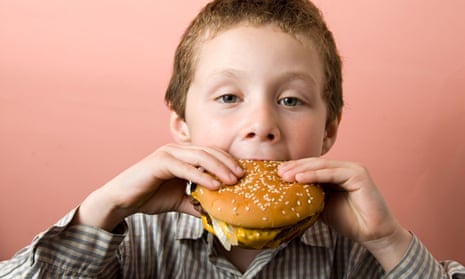Finding somewhere cheap to eat at a music festival can be tricky. But not in the Swedish town of Östersund. US fast food chain McDonald’s recently ran a campaign offering burgers to litter pickers at summer festivals: 10 empty cans got you a hamburger; collect 40 and you were in line for a Big Mac.
The campaign illustrates a new wave of incentive-based eco-branding that communications experts have dubbed “social marketing”. The idea is simple: brands ask you to do your bit to help make the world a better place and in return you get to feel good about yourself and perhaps receive a small reward.
Business rationale
So why do brands bother? The official line, of course, is that it’s their way of acting responsibly. So for McDonald’s it’s about “being a good neighbour” and helping cut down on litter. Marks & Spencer, on the other hand, which offers cash vouchers for second-hand clothes given to Oxfam via its “schwopping” scheme, says it wants to avoid waste to landfills. In the name of peace, residents of Marin County, California, can get a free Ben & Jerry’s ice-cream if they turn in violent video games.
But social marketing, like any marketing, is commercial. Brands might not be pushing us to buy stuff directly (that’s more akin to cause-related marketing) but they benefit in other ways: an enhanced reputation, brand equity, customer loyalty and in some cases, lower costs or reduced business risk.
Take PruHealth. The UK insurance company offers reductions on gym membership and free health screenings to increase the wellbeing of its policyholders. According to the company, a 2011 study of 300,000 participants in its keep-fit Vitality initiative found that consistently active members were 16% less likely to be admitted to hospital than those who remained inactive. Two gym visits a week, meanwhile, translated into a 13% lower risk of hospital admission.
“The more we can evolve our proposition to help our existing customers reduce their health risks, as well as attracting healthier customers back into the market, the more that we can dilute the impact of claims,” says Siobhan Griffiths, head of public relations at the UK insurance firm.
Similarly, M&S grudgingly accepts that the cost-savings, increased footfall and customer engagement from its “shwopping” partnership with Oxfam mark a “welcome side effect”. As Liza Freudman, marketing manager for M&S’s Plan A list of sustainability commitments, puts it: “Ultimately we’re a retailer and we want people to feel positive about us.”
Consumer incentive
So why do consumers buy in? The answer is not straightforward. For starters, not all consumers do. Kellogg’s learned that to its cost last year. The US cereal manufacturer found itself facing flak when it promised to provide a free school breakfast for every retweet it received on social media site Twitter.
“It just didn’t quite land. It felt a little distasteful,” says Giles Gibbons, founder of London-based sustainability communications consultancy Good Business. “If you can give another breakfast, then surely you should be doing it anyway.”
Instead, the social marketing campaigns that connect with consumers are those that avoid gimmicks and feel authentic. Gibbons cites PruHealth’s Vitality programme; people get why a health insurance provider wants them to get fit.
“There has to be some obvious reason about why you are doing what you are doing,” says Griffiths. “If PruHealth [were] to try and save the whale, we wouldn’t have any expertise or knowledge in doing that. It would be a nice-to-do thing.”
Consistency provides further reassurance to consumers. As a stand-alone campaign, the Östersund burgers-for-cans scheme could well be classed as a gimmick. Yet McDonalds insists the campaign forms part of a Europe-wide anti-littering effort, which includes extensive litter patrols in the UK and the consumer-facing Kick the Trash programme in Germany.
Simple is good
Other drivers of consumer uptake include the simplicity of the ask and the attractiveness of the reward. Again, the M&S example is illustrative. “Shwoppers” don’t have to do anything different, insists Freudman. “Just pick up a piece of clothing when you’re going shopping anyway and swop it while you’re there.” In return, donors receive a £5 voucher redeemable against their next £35 M&S purchase.
Brands need to be clear on the wider benefits of their social marketing efforts too. Yes, it is nice to get a £5 voucher, but it’s nicer still to feel you’ve contributed to keeping 8m clothes out of landfill so far (pdf). Not to mention the £3.2m that went towards Oxfam’s anti-poverty work last year.
“Customers are very quick to see through green claims,” says Freudman. “[The schwopping scheme] is all quite measurable, so we’re able to go back to our customers and say: actually, you’ve done this and this is the impact.”
Even so, convincing consumers to act can be difficult. Social marketing isn’t as clear-cut as its cause-related equivalent. You buy a pack of Pampers nappies, say, and brand owner P&G donates a vaccine against maternal and neonatal tetanus. “It’s very, very simple,” Nada Dugas, P&G’s external relations director for baby care, readily admits. Social marketing instead represents a more complex proposition. “Just because there are potential pitfalls doesn’t mean consumers are against it or companies shouldn’t do it,” says Gibbons. “They just need to think a bit harder.”
More like this
What virtual reality could mean for ads and brands
Ice bucket challenge: what are the lessons for marketers?
Bridging the divide between business and brand
To get weekly news analysis, job alerts and event notifications direct to your inbox, sign up free for Media Network membership.
All Guardian Media Network content is editorially independent except for pieces labelled ‘Advertisement feature’. Find out more here.

Comments (…)
Sign in or create your Guardian account to join the discussion